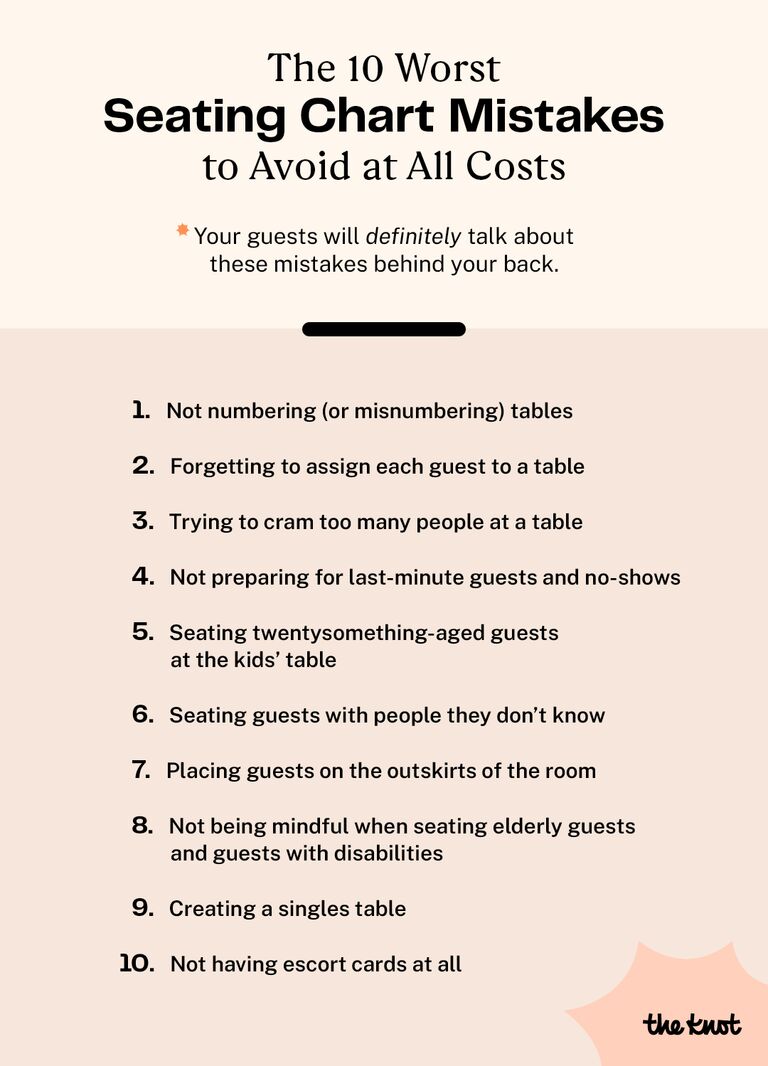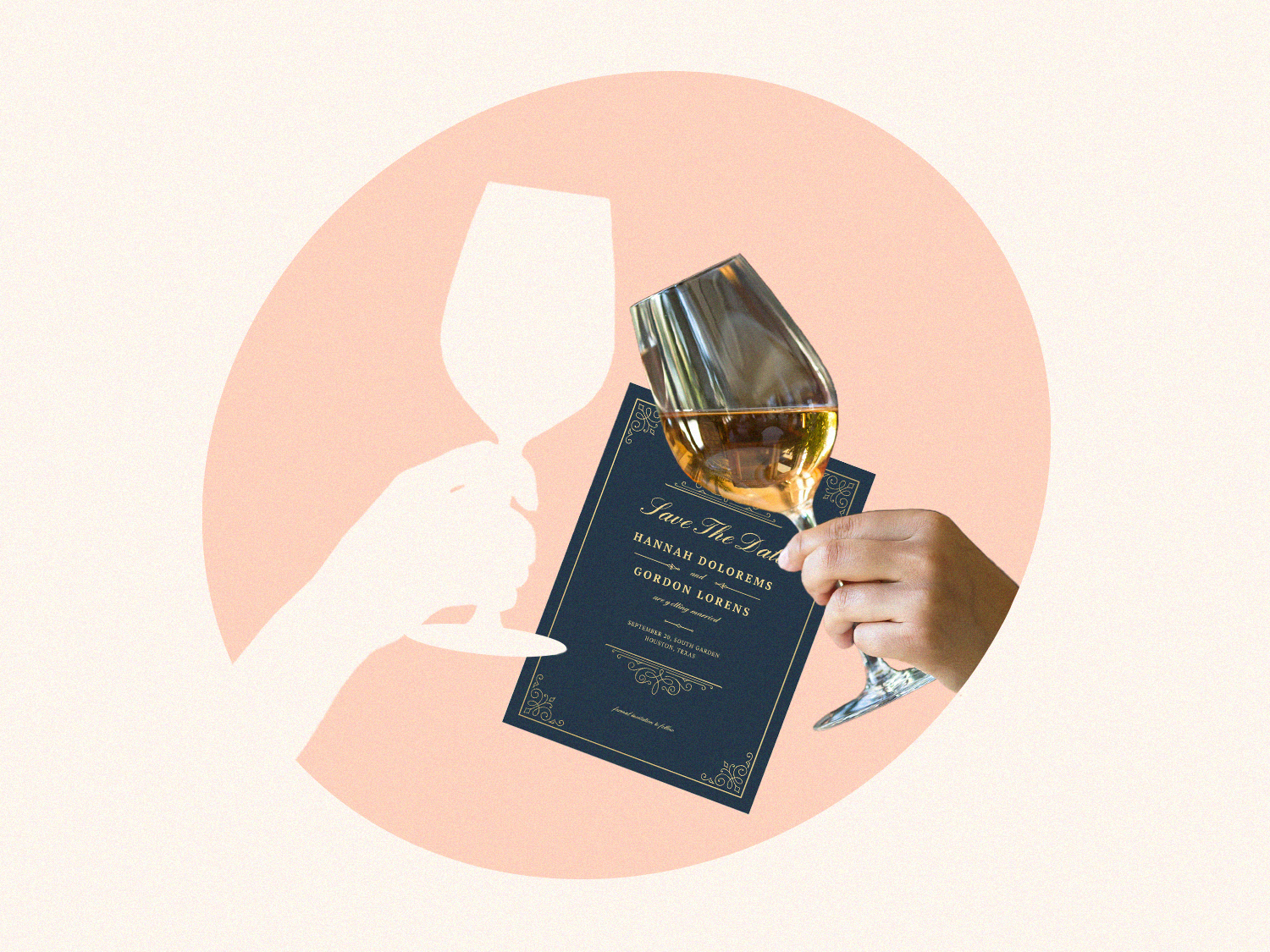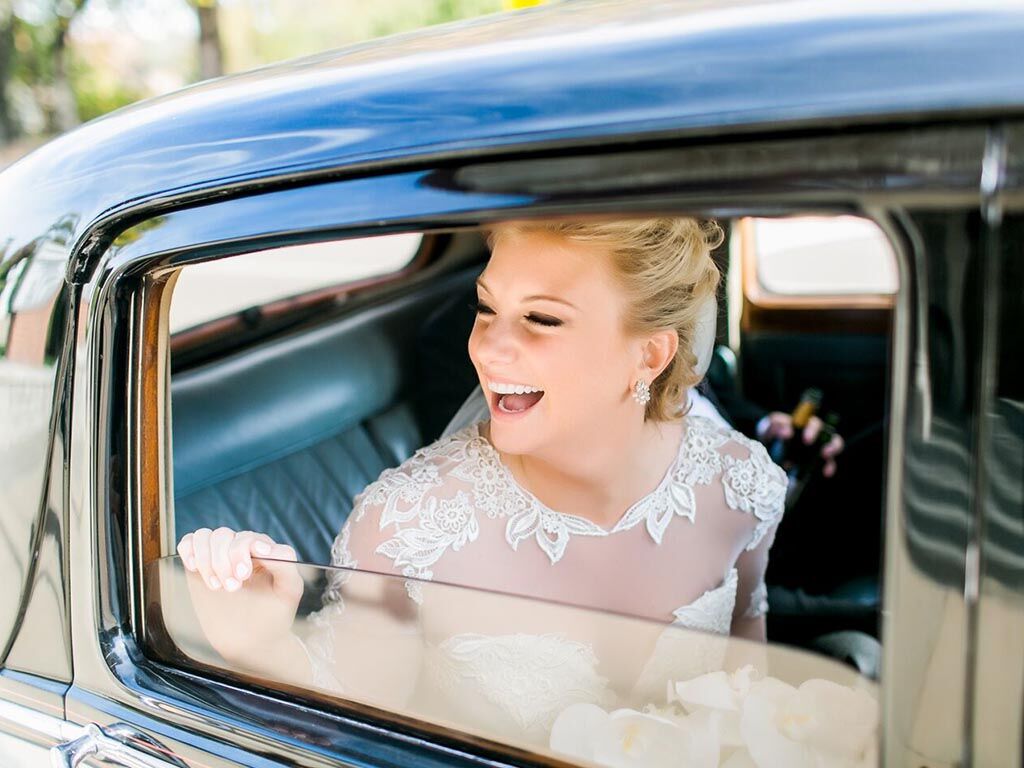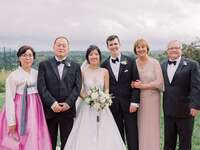10 Seating Chart Mistakes Your Guests Will Definitely Talk About Behind Your Back

It's one of those last-minute wedding tasks that pretty much everyone dreads. But putting together a seating chart is absolutely crucial, as it has a direct impact on your guests' overall experience and the vibe of the day. Obviously, you want to see all of your loved ones having fun at their tables, but certain wedding seating chart mistakes can definitely spoil a good time. Create the right vibe at your reception by putting the same thought into your seating chart as you did for your actual guest list —your loved ones will thank you, and your party will slay.
We talked to wedding planner Camille Plummer of JunePlumm Events in Brooklyn, New York about the worst seating chart mistakes you can make, and tapped her and our expert editors to provide solutions to these common problems.

1. Not Numbering or Misnumbering Tables
When guests enter the reception space, they should be able to find their tables and take their seats quickly. What you don't want is guests wandering around the room, or worse sitting at the wrong table. Randomly scattering tables around the reception space can cause mass chaos.
Wedding Planner's Tips: When it comes to how to number wedding tables, Plummer says that tables can either be arranged with even-numbered tables on the right of the room entrance and odd-numbered tables on the left, or in numeric order moving clockwise from the entrance. "Just make sure it makes sense and it is in a pattern that is easy for guests to locate their table," she says. "No one wants to go on a wild goose chase to find their table."
And while you absolutely can give tables cute names, you'll also need to number them to make it easy for guests to find. "Whenever applicable, position tables by table names in alphabetical order, like Apple, Carrot and Eggplant in the consecutive placements. This allows your guests to still follow a pattern and find their seats easily," Plummer says.
You can also get a little more creative with it, and provide guests with a fun floor map so that guests can easily find the location of their table. "This is a great space for innovation and design as well as the opportunity to include details on the significance of the table names," Plummer says.
2. One Guest Doesn't Have an Assigned Seat
Organizing the seating chart, escort cards and place cards is a big task, so it's understandable to be anxious that it will somehow get screwed up. The last thing you want is for a guest to not have a table assignment, resulting in last-minute shuffling and stress.
Wedding Planner's Tips: Wait until all RSVPs are in before starting your seating chart. Yes, that might require stalking certain guests to find out if they're coming or not. Then, it's all about
"Accountability is easier when there is one central guest list of attendees and those that RSVP'd yes," says Plummer. "And even then, you might miss someone. So check, check and recheck and then when you think you have accounted for everyone, have a third party check again.
3. Trying to Cram Too Many People at a Table
There are many different table shapes and sizes, each with a different capacity. Don't assume that just because a table can seat 12, that it seats 12 comfortably. While it might be convenient for you to try to squeeze as many people as possible at a table, think twice. "There is nothing worse than playing elbow hockey to try to reach a dinner roll," Plummer says.
Wedding Planner's Tips: Whether you're opting for round tables, long farm tables or a mix of shapes, don't take the listed capacity at face value. Talk to your planner, rentals company and/or vendor coordinator to figure out how many guests to seat comfortably at each table—and stay within that capacity when creating your seating chart (no exceptions!).
"My rule of thumb is round down by 2 seats if you have charger plates and to account for all the extras on the tables, such as multiple stemware, flatware and other service items," says Plummer. "This also serves as a buffer in case you need to squeeze in a last-minute guest." Speaking of which…
4. Not Preparing for Last-Minute Guests and No-Shows
Let's say your cousin Jim brings a date without informing you of his plans. This scenario is surprisingly common: Whether it's due to a misunderstanding or it's simply bad manners, somebody you're expecting solo shows up as a duo. Or, alternatively, a guest who RSVP'd yes falls sick and has sent regrets, or simply failed to appear.
Wedding Editor's Tips: While unexpected guests are just that, unexpected, there are ways to prepare. Designate a certain table as a "swing table" and add two extra place settings to it. You can quickly add extra guests to that table, or if there are no last-minute arrivals, you can just have the place settings removed.
No-show guests, while disappointing, are a bit easier to handle. If you use escort cards with envelopes, rather than the kind that have the guest's name and table number on the same card, you can simply put the old card in a new envelope, rather than having to rewrite both the name and table number. This preserves the uniform look of the envelopes on the escort table (rather than having a bridesmaid's handwriting mixed in with the artistry of your calligrapher). Or, you just have your catering team or wedding planner remove that guest's place setting and go with the flow.



5. Seating Twentysomething-Aged Guests at the Kids' Table
If you've invited kids to the wedding, you'll need to be strategic about where they're seated. If you've only invited a handful of little ones or the kids are younger than eight years old, they should probably sit with their parents. If you've got a larger group of kiddos, they can have their own table—but it should be reserved for children, not young adults.
Wedding Editor's Tips: Do your high school, college and twentysomething-aged family members a solid and treat them like adults (they'll love you for it) by either interspersing them at tables with their families or seating everyone who can legally drink together. Make the cut-off age for the kids' table extremely distinct—think: coloring books, crayons and toys at each place setting—and everyone will be happy. Trust us: You don't want a scenario where your 5-year-old cousin could accidentally mistake a vodka soda for a glass of water!
6. Seating Guests With People They Don't Know In Order to "Make New Friends"
We all know the saying "no new friends" (when you've got all the good friends you need and don't have room in your life or interest in making new, forced ones) but this especially rings true at a wedding. When all of your nearest and dearest are coming to celebrate you, this isn't the time to mix it up with the seating chart and try to make new friendships happen.
Wedding Editor's Tips: Between the pre-wedding parties, the rehearsal dinner and the after-party, your guests will have plenty of time to meet one another and forge new friendships if they so choose. Face it—do you really want your core college buddies to get split up on the off chance they'll make an everlasting bond with your cousins who live in another country? They'll definitely be bummed if they're not all seated together, just like you'd be—especially if they hardly get to see each other. And how awkward is an almost-silent table?
7. Placing Guests on the Outskirts of the Room
Of course you want to make every guest feel special, like they are at the center of the action, but it's inevitable that a few tables will be positioned at the outskirts of the event space. Guests seated at those tables might feel a little bummed.
Wedding Editor's Tips: The best way to keep people seated at these tables from thinking they're in social exile is to seat a few members of the wedding party there too. The guests at the outlying tables won't feel left out if they're surrounded by bridesmaids or groomsmen, and your attendants will understand that it's one of their duties to help everyone feel included, even if it means they aren't seated as close to you as they'd like to be.
8. Not Being Strategic About Seating Elderly Guests and Guests With Disabilities
It's not only important to consider whom guests are sitting with, but also where they're situated around the room. This is especially crucial for older guests or those with disabilities so that they can fully enjoy the reception. Guests will be disappointed if they are unable to see or access the event, or if they are distracted by too-loud music or other disturbances.
Wedding Editor's Tips: It's best to seat elderly guests as far away from the music (DJ, band, speakers, etc.) as possible, while still giving them clear sight lines to the dance floor to watch the action. Guests in wheelchairs or with other movement concerns should be able to easily access the dance floor and the exit. Particularly for guests in wheelchairs, be sure that their chair at their reception table is removed in advance.
9. Creating a Singles Table
You might be trying to make a love connection at your wedding (it happens!) but there's no need to be overly obvious about it. Guests want to sit with folks they know, and not be placed at a table of random strangers just because they're all unattached. At best, guests at a singles table will feel awkward, and at worst, they'll be downright insulted.
Wedding Editor's Tips: Seat guests with people they know, and not by relationship status If a hookup is going to happen, it'll happen no matter where a guest is seated.
10. Not Having Escort Cards at All
For laid-back couples, you may think skipping seating arrangements is the way to go. Your guests can choose to sit where they want, they don't feel forced to sit with people they'd rather not, and it won't feel stuffy at all—right? Not so fast. Here's a little secret: At weddings, people actually like to be told what to do. Nobody wants to be the guest who missteps or makes a faux pas, so when the first guest has made their way through the buffet line, they might have a slight panic attack when faced with rows of empty tables. It'll feel more like a middle school cafeteria on the first day or school than a celebratory event.
Wedding Editor's Tips: Unless your wedding is both extremely casual and 25 guests or under, you should absolutely create table assignments—it won't come off as too fancy at all. Your guests will like knowing exactly where they're supposed to be, and that you took the time and effort to place them with people they'll enjoy sitting with.




















